Dracaena is a succulent representative of the Asparagus family, the distribution area of which is mostly Africa. The exotic appearance has become the reason for the increased popularity of this flower among phytodesigners who today love to use different types of unusual plants to decorate a variety of interiors, given the fact that caring for dracaena at home is quite simple.
Material Content:
Dracaena: types and varieties
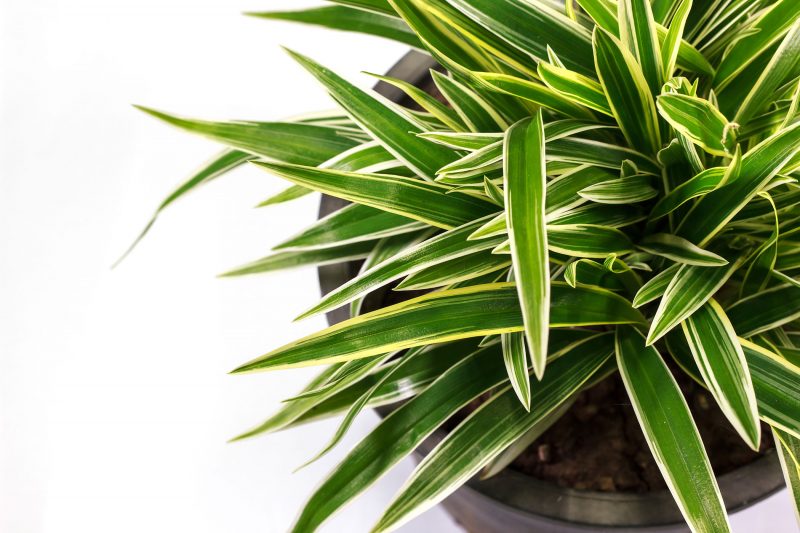
In the natural environment, the genus has 113 species represented by shrubs and small trees. However, only some varieties are grown in indoor floriculture.
Dracaena Marginata
She is a fringed dracaena - the most common species in indoor floriculture with lignified stems reaching a height of 3 meters.

Graceful, thin leaves from 30 to 50 cm long are distinguished by a diverse color of both the plate itself and the border, depending on the shape and variety:
- Magenta;
- Bicolor;
- Tricolor
Fragrant Dracaena
A plant distinguished by a pleasant aroma of flowers that are not observed in urban conditions. Rosette glossy leaves with a wide yellow stripe in the center in the length can reach 1 meter.

The most popular varieties are:
- Dracaena "Malayka" is a variegated plant with shortened leaves, distinguished by excellent decorative qualities.
- Dracaena "Surprise" is a dwarf variety with a height of up to 40 cm and a non-standard color of elliptical leaves, combining green and snow-white color.
- Dracaena compacta is a form distinguished by a dense bunch of thin almost black leaves with a glossy finish. Despite the name, some specimens can reach impressive sizes.
Dracaena Sander
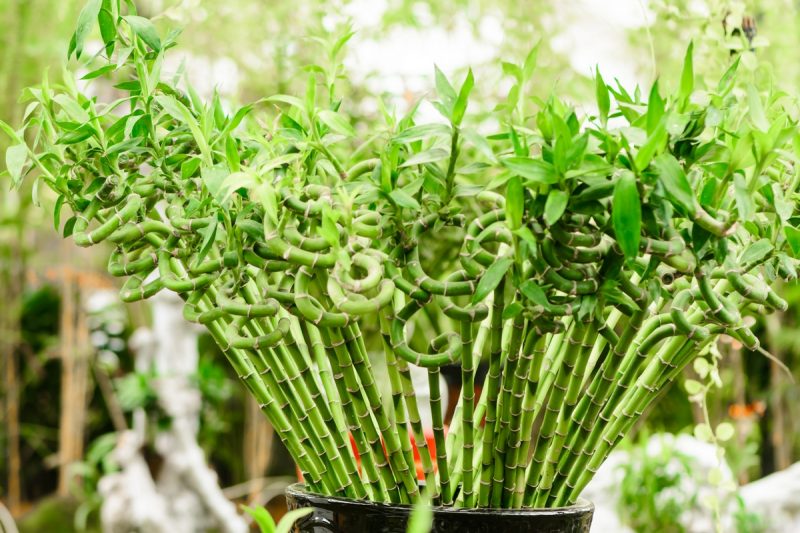
A semi-shrub lush plant with a short trunk and twisted leaves of gray-green color, the height of which does not exceed 80 cm. It adapts perfectly to the apartment environment and does not need to be sprayed.
Dracaena Godsef
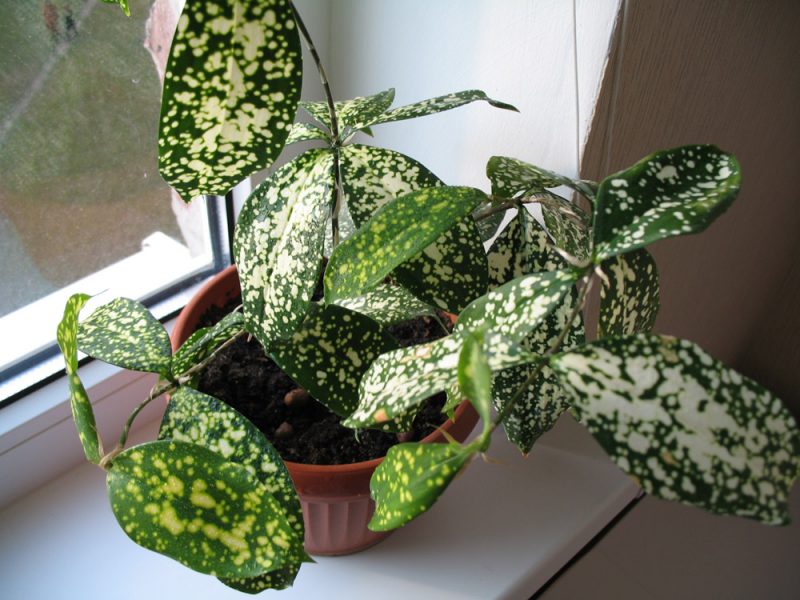
A species that differs from all others with a slight height of up to 60 cm and oval leaves strewn with specks of light colors.
Dracaena Mix

Often seen in flower shops is a spectacular hybrid obtained by crossing different species. A distinctive feature is the variety of forms represented by plants, both with narrow and wide leaves of completely different colors - from green to brown.
Dragon dracaena
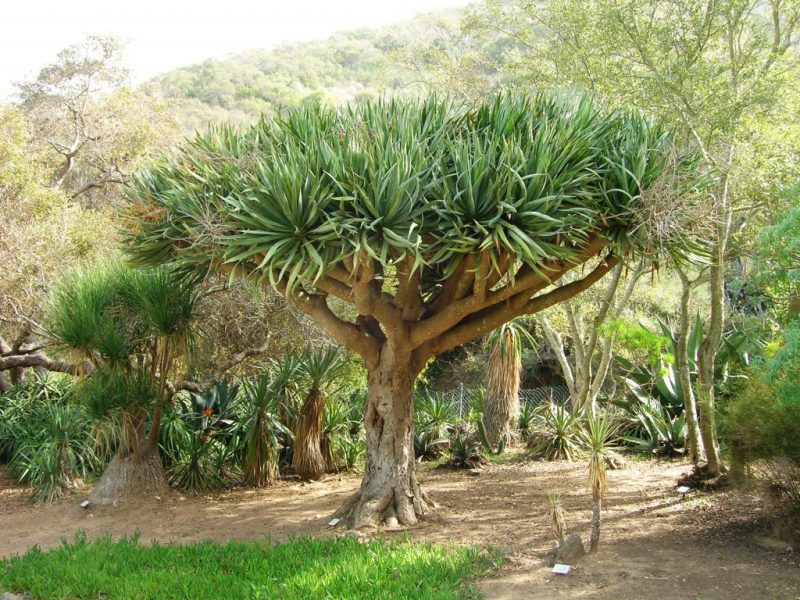
A cactus-like tree in which rosettes of pointed leaves grow on thickened shoots. In case of damage to the plant, tarry juice is secreted, which, when it reacts with air, acquires a blood-red color of “dragon blood”.
Read also:calathea at home
The nuances of growing plants
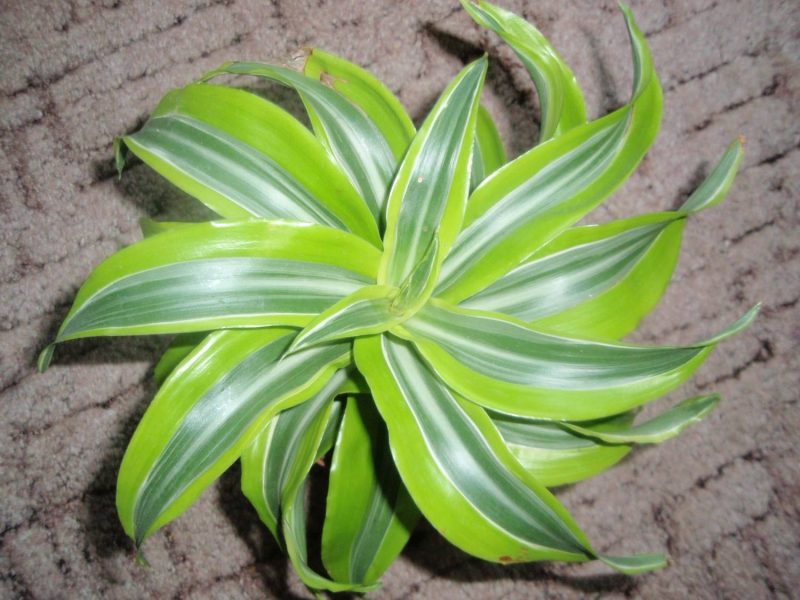
In order for the plant to maintain decorative qualities for a long time and decorate the house with elegant leafy rosettes, it is worth taking into account a number of features of dracaena:
- intolerance to waterlogging;
- the need for winter in brighter lighting than in summer;
- acute need for additional humidification during the operation of heating devices;
- love of free air circulation.
Home Care for Dracaena
Agricultural techniques for growing dracaena provides for the regular implementation of a number of care activities.
Ground and pot requirements
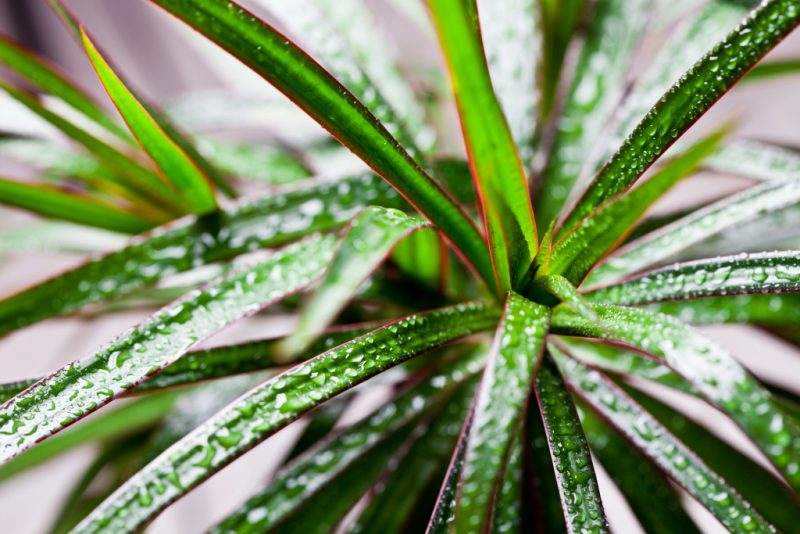
Dracaena is unpretentious to the soil composition. The main thing is that the soil has a loose structure, which will provide free access of air to the roots and good water permeability. The substrate can be prepared from turf, sheet land of peat and sand in equal proportions. For an exotic plant, a tall, but not wide pot is selected, at the bottom of which a thick layer of drainage material is placed.
Lighting
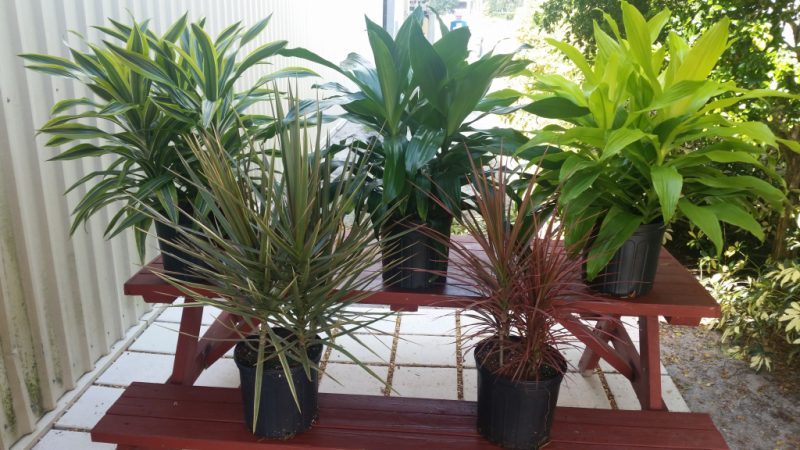
Like other tropical plants that live in the middle tier of forests, dracaena needs a lot of soft light, which she can get, being on the east window or at some distance from the south. In winter, the tropical plant must be provided with additional illumination using fluorescent lamps.
Temperature
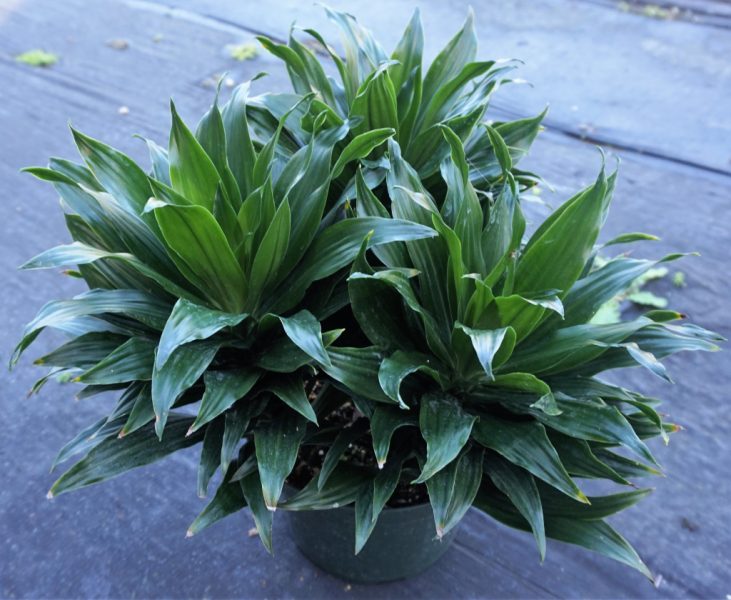
The heat-loving culture feels great in the spring-summer period at temperatures in the range of 20-25 ° C. With the advent of winter, the temperature regime can drop to the level of 15 ° C, but not lower than the maximum permissible value of 12 ° C.
Watering the plants and humidity
Care for dracaena marginata, as well as for other species, provides for systematic and abundant watering, the signal for the next portion of which is drying of an earthen coma by 2-3 cm. In the summer, the approximate interval is 2 days, and in the winter period between humidifications it increases that dracaena is not placed next to heating appliances. In order not to overmoisten a plant whose roots react very sharply to excess moisture, a flower should also be sprayed daily.
Important! Water procedures are carried out with standing water at room temperature.
Fertilizer and fertilizer
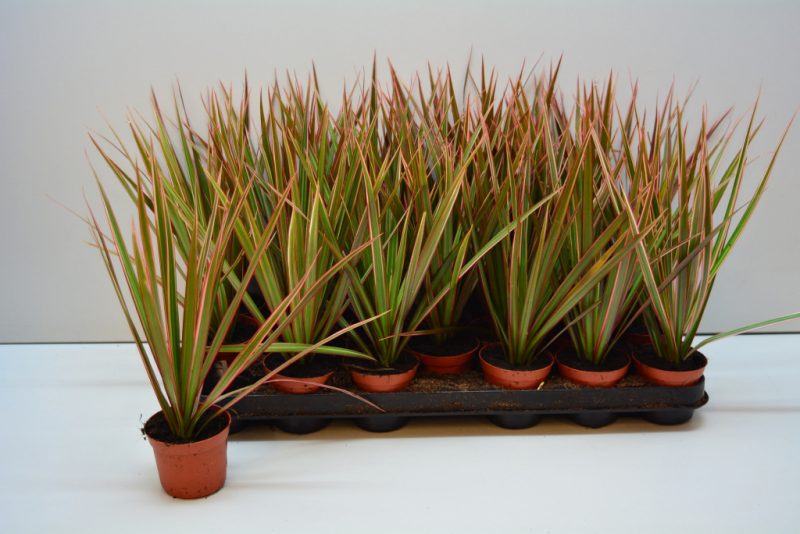
Dracaena is fed in the period of active growth, marked from mid-spring to the end of the detail, twice a month with the help of liquid complex mineral fertilizers for ornamental plants.
Transfer
Young specimens are transplanted annually, and adult plants - with an interval of 3-4 years, depending on the growth rate of a tropical plant and soil depletion.
In the procedure, the optimal time for which is considered spring:
- A large pot is selected.
- A drainage layer is laid at the bottom.
- Dracaena is being reloaded from the old tank.
- A special substrate is added to the new pot.
- When the tank is completely full, the soil is compacted and moistened.
Winter care
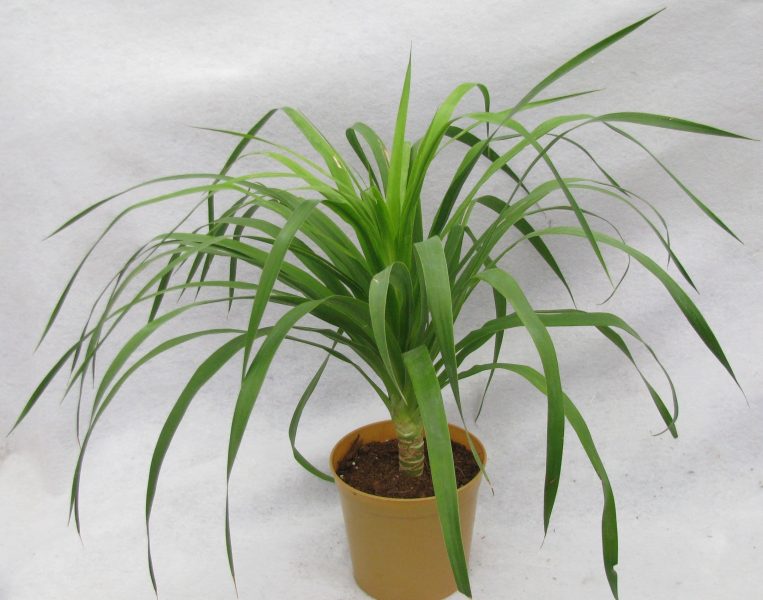
If the flower is placed in a cool room, then, in addition to additional lighting, it needs to provide only rare watering. If the plant is not far from the heater, then all water procedures are carried out almost on the same schedule as in other seasons.
Attention! Regardless of the temperature in winter, dracaena is not fed.
Pests, diseases and methods of dealing with them
Culture is rarely affected by disease or pests.
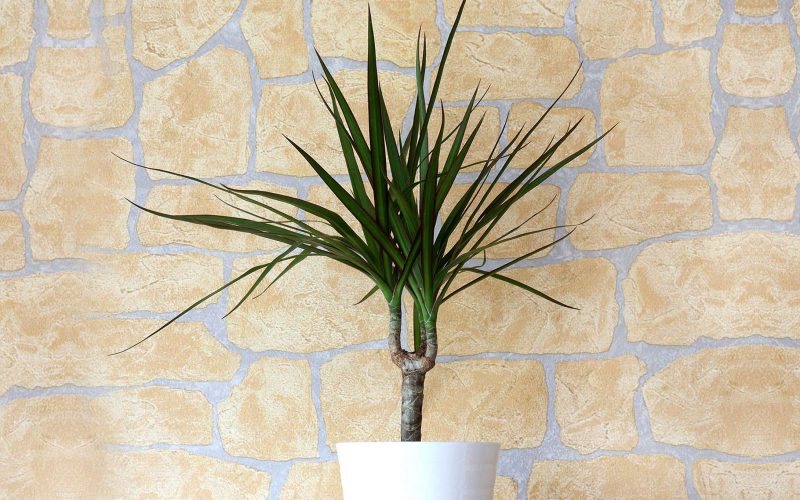
However, in case of violation of the irrigation regime and humidity on the dracene, manifestations of such harmful organisms can be detected:
- Bacteriosis is a disease that develops due to excessively moist air that cannot be treated.
- Gray rot is a disease caused by systematic waterlogging of the soil. To cure the plant, you will have to remove the affected roots, and then transplant the flower into a new substrate.
- A spider mite, scale insect and aphid are insects that inhabit a plant in dry air. To control pests, spray Dracaena with an insecticide solution.
Dracaena propagation
Variegated forms reproduce only by vegetative methods. For species with solid leaves, the seed method can be applied.
Propagation using apical cuttings
The technique is used to rejuvenate dracaena marginata, which, growing up to 2 m in height, loses its decorativeness, representing long bare stems with bunches of leaves in the upper part.
Stages of the procedure:
- With a sharp knife, the top is cut off with a 10 cm stem.
- The cut is sprinkled with charcoal and treated with a growth stimulator.
- Leaves are shortened by a third.
- The cutlery is placed in a pot with prepared substrate.
By air layering
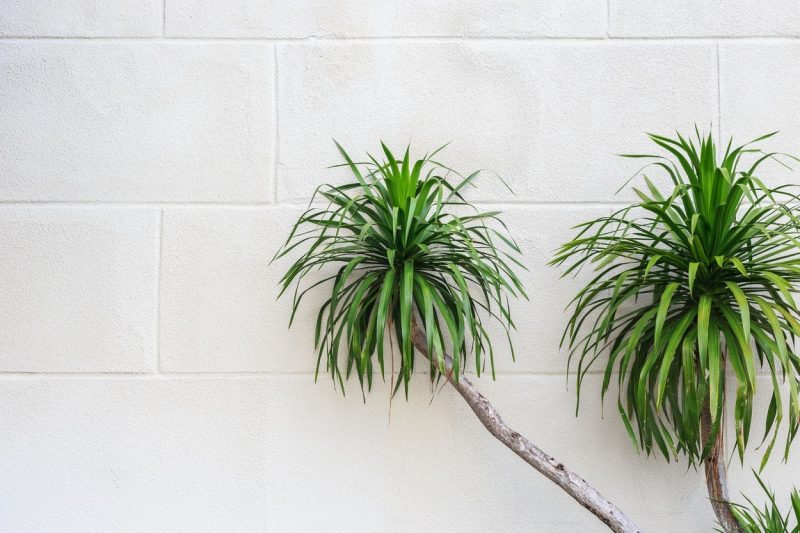
With this rejuvenation method:
- An incision is made on the bare stalk, just below the apex.
- The damaged area is wrapped with moss and fixed with polyethylene.
- After root formation, the tip is cut off and planted in an individual container.
How to propagate by stem cuttings?
With bacteriosis, the top begins to decay, so if you can’t save the maternal specimen, you can propagate it using a similar procedure:
- Cuttings with a length of 15 cm are cut along leaf scars on a healthy stem.
- Planting material is aged in a growth promoter, after which it is buried by 2-3 cm in moist sand, under which there is a loose substrate.
- After 2 months, shoots begin to appear, indicating successful rooting.
Dracaena propagation by seeds
A rarely used method in which:
- The change is embedded in a substrate of sand and peat to a depth of 1 cm.
- The container is covered with a film and kept warm, where the crops are systematically moistened and ventilated.
- Shoots appear sparsely - in the time interval between a month and six months.
Problems that growers may encounter when growing
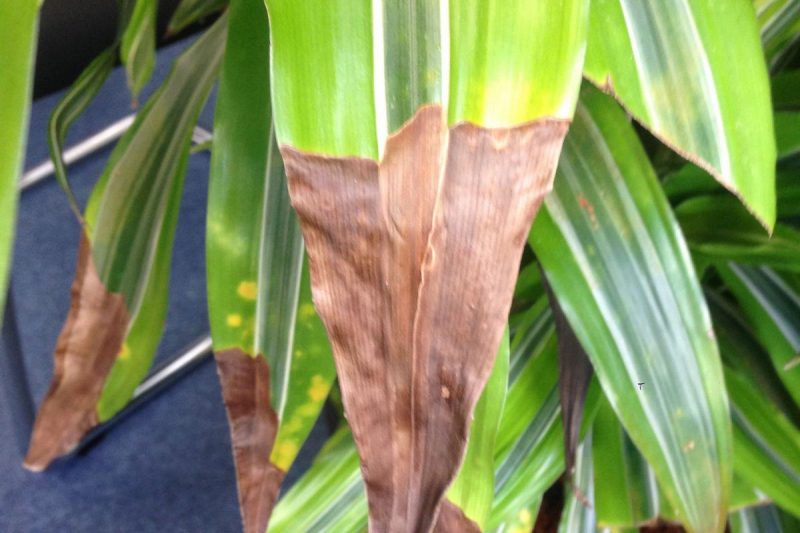
Growing dracaena can cause some difficulties for beginning gardeners:
- The tips of the leaves are dry - the cause of the problem is insufficient air humidity, at which the plant should be systematically sprayed with warm water. It is advisable to carry it out daily, even better day and evening.
- Brown spots appear on the leaves - placing the pot in bright sun without shading or in a draft can lead to burns or the development of the disease.
- Dracaena turns yellow. If the lower tier of leaves turns yellow and falls, then this is a natural process that demonstrates plant growth. If yellowing is manifested on young leaves, then the reason may lie in the violation of the irrigation regime.
Thus, dracaena is a spectacular tropical plant with excellent decorative qualities, which manifests its character only with a systematic violation of agricultural cultivation techniques.












